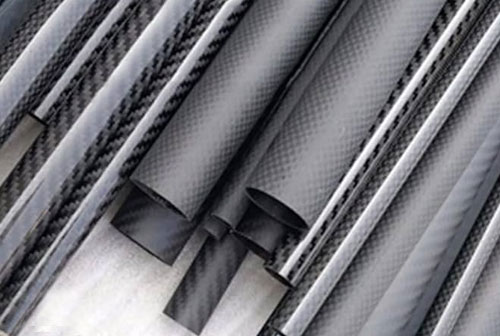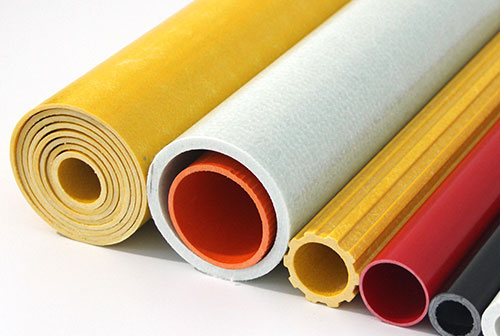Carbon fiber round tubes and fiberglass round tubes are both composite materials, widely used in various industries due to their high strength-to-weight ratio and corrosion resistance. While they share some similarities, there are significant differences in their properties, applications, and costs. This article will delve into a detailed comparison of these two materials to help you determine which one is the best fit for your project.
Understanding Carbon Fiber Round Tubes
Carbon fiber round tubes are manufactured by impregnating carbon fibers with a resin and then curing them to form a composite material. Carbon fibers are incredibly strong and lightweight, making carbon fiber tubes ideal for applications that require high strength, stiffness, and low weight.
Key Properties of Carbon Fiber Round Tubes:
High strength-to-weight ratio: Carbon fiber tubes offer exceptional strength and stiffness relative to their weight, making them ideal for applications where weight is a critical factor.
Excellent stiffness: Carbon fiber tubes exhibit high stiffness, providing excellent dimensional stability and resistance to deformation.
Corrosion resistance: Carbon fiber tubes are highly resistant to corrosion, making them suitable for harsh environments.
Thermal conductivity: Carbon fiber tubes have good thermal conductivity, making them suitable for applications requiring heat dissipation.
Applications of Carbon Fiber Round Tubes:
Carbon fiber, as a lightweight, high-strength material, its application in the industrial manufacturing field is becoming more and more widespread. Carbon fiber CNC machining allows for high precision cutting and forming, meeting the complex design needs of many industries.
Aerospace: Aircraft components, such as wings and fuselages
Automotive: Racing car components, structural reinforcements
Sports equipment: Bicycle frames, fishing rods, golf clubs
Industrial machinery: Robotic arms, precision equipment
Understanding Fiberglass Round Tubes
Fiberglass round tubes are manufactured by impregnating glass fibers with a resin and then curing them to form a composite material. Glass fibers are less expensive than carbon fibers, making fiberglass tubes a more cost-effective option for many applications.
Key Properties of Fiberglass Round Tubes:
Corrosion resistance: Fiberglass tubes are highly resistant to corrosion, making them ideal for use in corrosive environments.
Electrical insulation: Fiberglass tubes are excellent electrical insulators, making them suitable for applications where electrical conductivity is a concern.
Chemical resistance: Fiberglass tubes are resistant to many chemicals, making them ideal for use in chemical processing industries.
Applications of Fiberglass Round Tubes:
Construction: Reinforcements for concrete, poles, and pipes
Marine: Boat hulls, masts, and spars
Chemical processing: Piping and tanks for corrosive fluids
Sports equipment: Fishing rods, archery bows
Carbon Fiber vs. Fiberglass: A Comparison
Choosing the Right Material
The choice between carbon fiber and fiberglass round tubes depends on several factors, including:
Required strength and stiffness: If you require maximum strength and stiffness, carbon fiber is the better choice. However, if you need a good balance of strength and weight, fiberglass may suffice.
Cost: Carbon fiber tubes are more expensive than fiberglass tubes. If cost is a major concern, fiberglass may be a more suitable option.
Environmental conditions: Carbon fiber tubes are generally more suitable for harsh environments, while fiberglass tubes are well-suited for corrosive environments.
Specific application: The specific application will determine the required properties of the tube.
Conclusion
Both carbon fiber and fiberglass round tubes offer unique advantages and disadvantages. Carbon fiber tubes provide superior strength, stiffness, and weight savings, but they come at a higher cost. Fiberglass tubes offer a good balance of properties at a lower cost, making them suitable for a wide range of applications. By carefully considering the factors discussed in this article, you can make an informed decision about which material is the best fit for your project.
 +86 15303735673
+86 15303735673 Jessica@frpzs.com
Jessica@frpzs.com
 Technical Data
Technical Data













